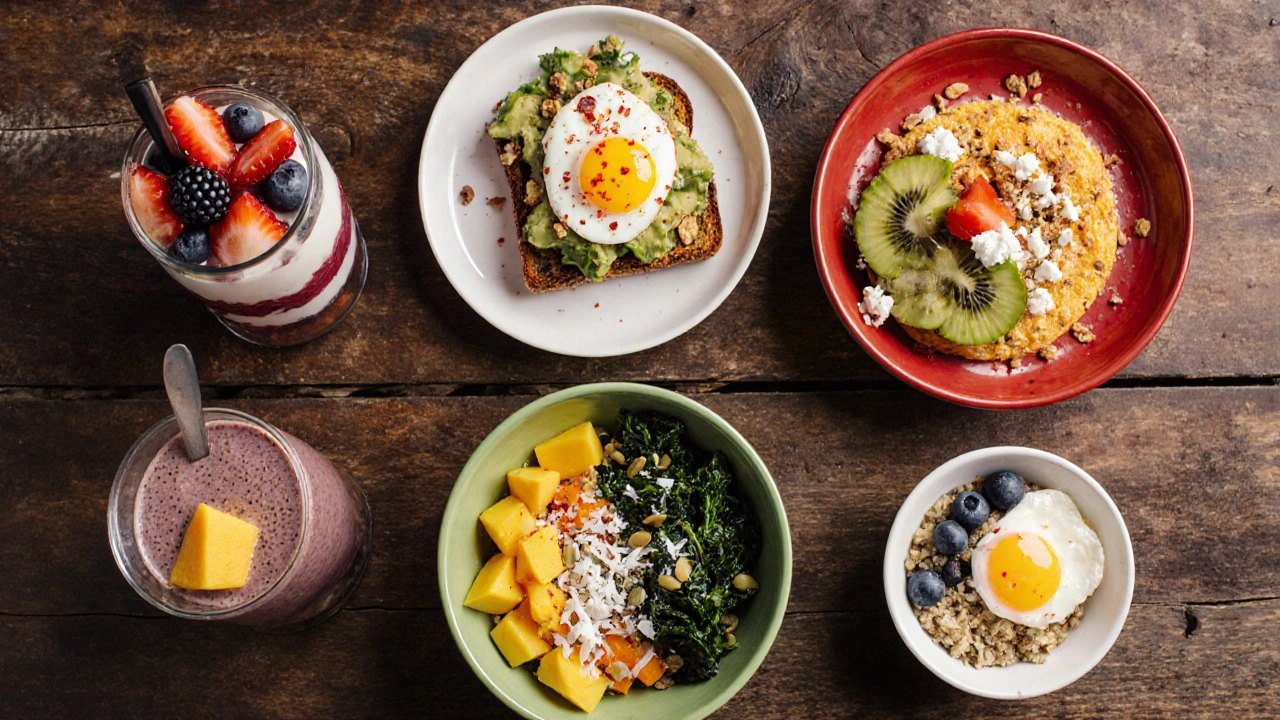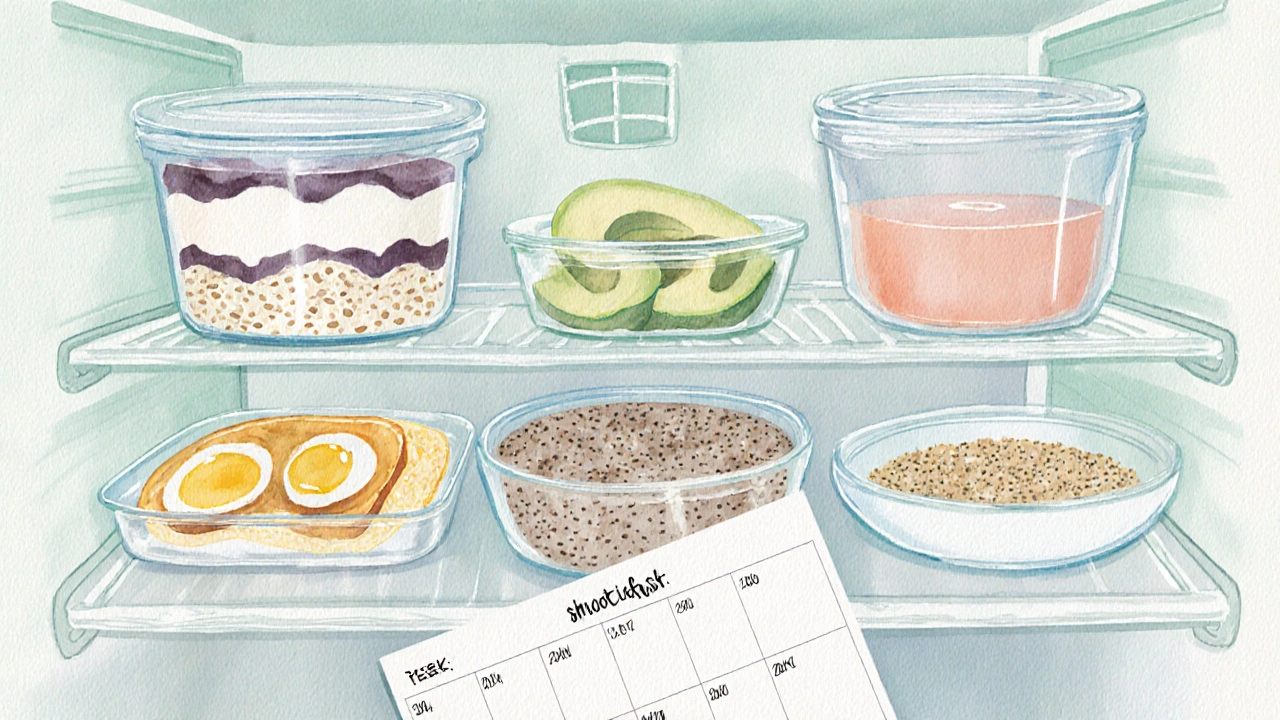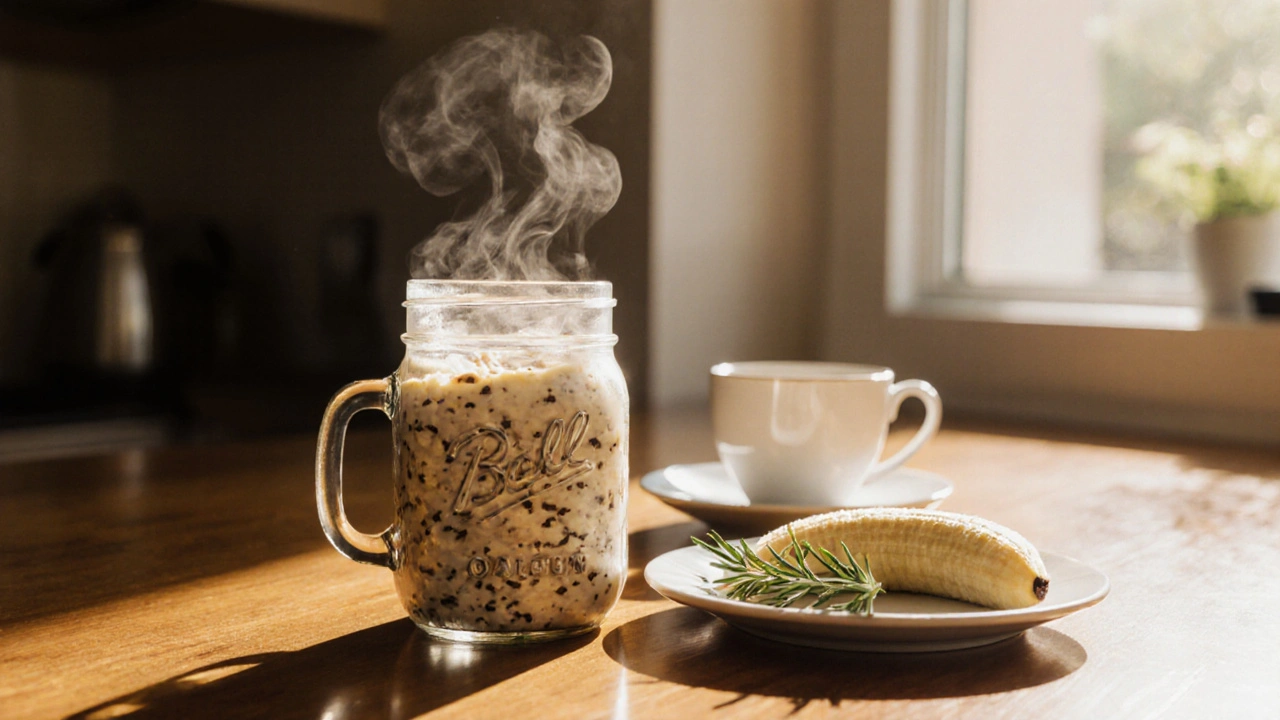Breakfast Nutrition Calculator
Find Your Perfect Breakfast
Enter your daily nutrition goals to see which breakfast ideas meet your needs.
Sample 7-Day Plan
Generate a personalized 7-day breakfast plan based on your preferences.
Skipping breakfast is a myth that still haunts many of us, especially when mornings feel rushed. Healthy Breakfast Ideas are nutrient‑dense meals that fuel your body, stabilize blood sugar, and boost mood before the workday begins. In this guide you’ll discover practical, tasty options that fit into a busy schedule without sacrificing nutrition. Whether you need a grab‑and‑go bowl or a sit‑down plate, the recipes below cover all the bases.
Why Breakfast Matters
Research from the University of Cambridge (2023) shows that eating a balanced breakfast can improve cognitive performance by up to 12% during the first two hours of work. The body’s metabolism switches from a fasted state to a fed state, releasing insulin to shuttle glucose into cells. Without that early energy surge, you risk mid‑morning energy dips, increased cravings, and even slower metabolism over time.
Beyond calories, the quality of the first meal matters. A mix of protein, fiber, and healthy fats helps keep hunger at bay, stabilizes cortisol, and supports hormone balance. That’s why each of the ideas below follows three core principles:
- Protein: 10‑20 g to sustain muscle and satiety.
- Fiber: 3‑6 g for steady glucose release.
- Complex carbs: Low‑glycemic sources for lasting energy.
Key Nutrition Principles for a Power‑Packed Morning
Before diving into recipes, let’s unpack the nutrients that make a breakfast truly healthy.
Oatmeal is a whole‑grain powerhouse packed with soluble fiber (beta‑glucan) that lowers LDL cholesterol and slows sugar absorption. A half‑cup of dry rolled oats provides about 5 g of fiber and 6 g of protein-perfect as a base.
Greek Yogurt offers up to twice the protein of regular yogurt while delivering probiotics for gut health. Choose plain, 2% varieties for the best protein‑to‑calorie ratio.
Avocado Toast delivers monounsaturated fats and potassium, which support heart health and electrolyte balance. Pair it with whole‑grain bread for added fiber.
Egg White Omelette is a low‑fat, high‑protein staple that can be loaded with vegetables for extra vitamins and minerals. One cup of egg whites supplies roughly 26 g of protein with virtually no cholesterol.
Smoothie Bowl combines blended fruit, leafy greens, and a protein boost (like pea protein or nut butter) for a nutrient‑dense, portable meal. The thick texture invites toppings that add crunch and fiber.
Understanding these building blocks lets you mix and match ingredients while staying within the healthy breakfast ideas framework.
Quick and Easy Healthy Breakfast Ideas
Below are seven breakfast concepts you can prep in under 10 minutes or batch‑cook for the week.
-
Overnight Oats are a set‑and‑forget option using rolled oats, milk (or plant‑based alternative), chia seeds, and a touch of maple syrup. Combine ½ cup oats, ¾ cup liquid, 1 tbsp chia, and your favorite fruit in a mason jar. Chill overnight and wake up to a creamy, fiber‑rich bowl.
-
Greek Yogurt Parfait layers plain Greek yogurt, fresh berries, granola, and a drizzle of honey for a balanced mix of protein, antioxidants, and crunch. Aim for ¾ cup yogurt, ½ cup berries, and ¼ cup low‑sugar granola.
-
Avocado Toast with Egg sprinkles mashed avocado on whole‑grain toast, tops it with a poached or soft‑boiled egg, and seasons with red pepper flakes. This combo delivers roughly 15 g protein, 10 g fiber, and heart‑healthy fats.
-
Egg White Veggie Omelette whisks egg whites with spinach, bell peppers, and mushrooms; cooks in a non‑stick pan; and finishes with a sprinkle of feta. Add a side of sliced tomato for extra vitamin C.
-
Smoothie Bowl blends frozen berries, banana, spinach, almond milk, and a scoop of plant‑based protein powder; top with sliced kiwi, pumpkin seeds, and shredded coconut. The bowl packs about 20 g protein and 8 g fiber.
-
Chia Seed Pudding mixes chia seeds, coconut milk, and vanilla; lets it thicken overnight; then tops with sliced almonds and fresh fruit. Chia delivers omega‑3 fatty acids and 10 g fiber per serving.
-
Quinoa Breakfast Bowl cooks quinoa in low‑sodium broth, then tosses it with roasted sweet potato cubes, kale, and a fried egg for a complete, savory start. Quinoa adds a complete amino‑acid profile, while the sweet potato gives complex carbs.
Nutrient Snapshot: Compare the Options
| Dish | Calories | Protein (g) | Fiber (g) | Prep Time |
|---|---|---|---|---|
| Overnight Oats | 320 | 12 | 8 | 5 min + 8 hr chill |
| Greek Yogurt Parfait | 260 | 20 | 5 | 5 min |
| Avocado Toast with Egg | 350 | 15 | 10 | 7 min |
| Egg White Veggie Omelette | 210 | 26 | 4 | 6 min |
| Smoothie Bowl | 290 | 22 | 8 | 8 min |
| Chia Seed Pudding | 240 | 8 | 10 | 5 min + 4 hr chill |
| Quinoa Breakfast Bowl | 380 | 18 | 6 | 12 min |

Tips to Keep Your Breakfast Routine Fresh
- Batch‑cook grains: Cook a big pot of oatmeal or quinoa on Sunday; store in the fridge for quick reheating.
- Swap ingredients seasonally: Use summer berries, autumn apples, or winter citrus to keep flavors interesting.
- Prep toppings ahead: Portion out nuts, seeds, and dried fruit in snack bags for easy sprinkle‑on.
- Mind the sugar: Opt for natural sweeteners like mashed banana or a drizzle of honey rather than refined syrups.
- Portion control: Use a food scale or measuring cups the first few times to gauge how many calories you truly need.
Common Mistakes and How to Avoid Them
Mistake 1: Choosing high‑glycemic carbs alone. A plain toast with jam spikes glucose and crashes within an hour. Pair carbs with protein or healthy fat to blunt the rise.
Mistake 2: Skipping protein. Without at least 10 g of protein, you’ll feel hungry sooner. Including Greek yogurt, egg whites, or plant protein powders solves this.
Mistake 3: Over‑loading on added sugars. Flavored yogurts, sweetened cereals, and flavored oatmeal packets can double the sugar count. Read labels and choose unsweetened bases.
Fixing these habits adds up quickly: steadier energy, fewer mid‑morning cravings, and better overall nutrient intake.
How to Tailor Breakfast to Specific Goals
Weight‑loss focus: Keep calories around 300‑350, prioritize high‑fiber foods like chia and oats, and limit added fats to a teaspoon of nut butter.
Muscle‑gain focus: Aim for 25‑30 g protein, add a scoop of whey or pea protein to a smoothie bowl, and include calorie‑dense toppings like almonds.
Vegan or dairy‑free: Substitute Greek yogurt with soy or coconut yogurt, use plant‑based milks, and rely on beans, lentils, or tofu for protein.

Putting It All Together: A Sample 7‑Day Plan
Here’s a ready‑to‑use schedule. Feel free to mix‑and‑match based on your pantry.
- Monday - Overnight Oats with blueberries and almond butter.
- Tuesday - Greek Yogurt Parfait with strawberries and low‑sugar granola.
- Wednesday - Avocado Toast with a poached egg and tomato slices.
- Thursday - Egg White Veggie Omelette with feta and a side of orange.
- Friday - Smoothie Bowl (banana, mixed berries, spinach, pea protein) topped with pumpkin seeds.
- Saturday - Chia Seed Pudding with mango cubes and shredded coconut.
- Sunday - Quinoa Breakfast Bowl with roasted sweet potato, kale, and a fried egg.
Follow this plan for a week, track how you feel, and adjust portion sizes or toppings as needed.
Final Thoughts
Breakfast doesn’t have to be boring or time‑consuming. By anchoring each meal in protein, fiber, and complex carbs, you set the tone for a productive, balanced day. Pick the ideas that fit your taste, prep time, and health goals, and you’ll never look back.
Frequently Asked Questions
Can I eat breakfast if I’m not hungry in the morning?
Yes. A light, protein‑rich snack (like a Greek yogurt cup) can activate metabolism and prevent later overeating, even if you don’t feel a strong appetite.
How far ahead can I prep breakfast for the week?
Grains (oats, quinoa) and chia pudding stay fresh for up to 5 days in the fridge. Hard‑boiled eggs and roasted veggies last 4‑5 days. Just keep sauces separate to avoid sogginess.
What’s a good dairy‑free milk substitute for oatmeal?
Unsweetened oat milk or almond milk work well. Oat milk adds a creamy texture and a bit of extra fiber, while almond milk is lower in calories.
Is it okay to eat fruit juice instead of whole fruit?
Whole fruit is preferable because it retains fiber, which slows sugar absorption. If you need a quick drink, limit juice to 4‑ounce portions and choose 100 % no‑added‑sugar varieties.
How can I boost iron intake at breakfast?
Combine iron‑rich foods (like quinoa, fortified cereals, or spinach) with vitamin C sources (orange slices, strawberries) to enhance absorption.
What’s the best way to keep breakfast low‑sodium?
Choose low‑sodium broth for cooking grains, avoid processed meats, and season with herbs, spices, or a splash of lemon instead of salt.






